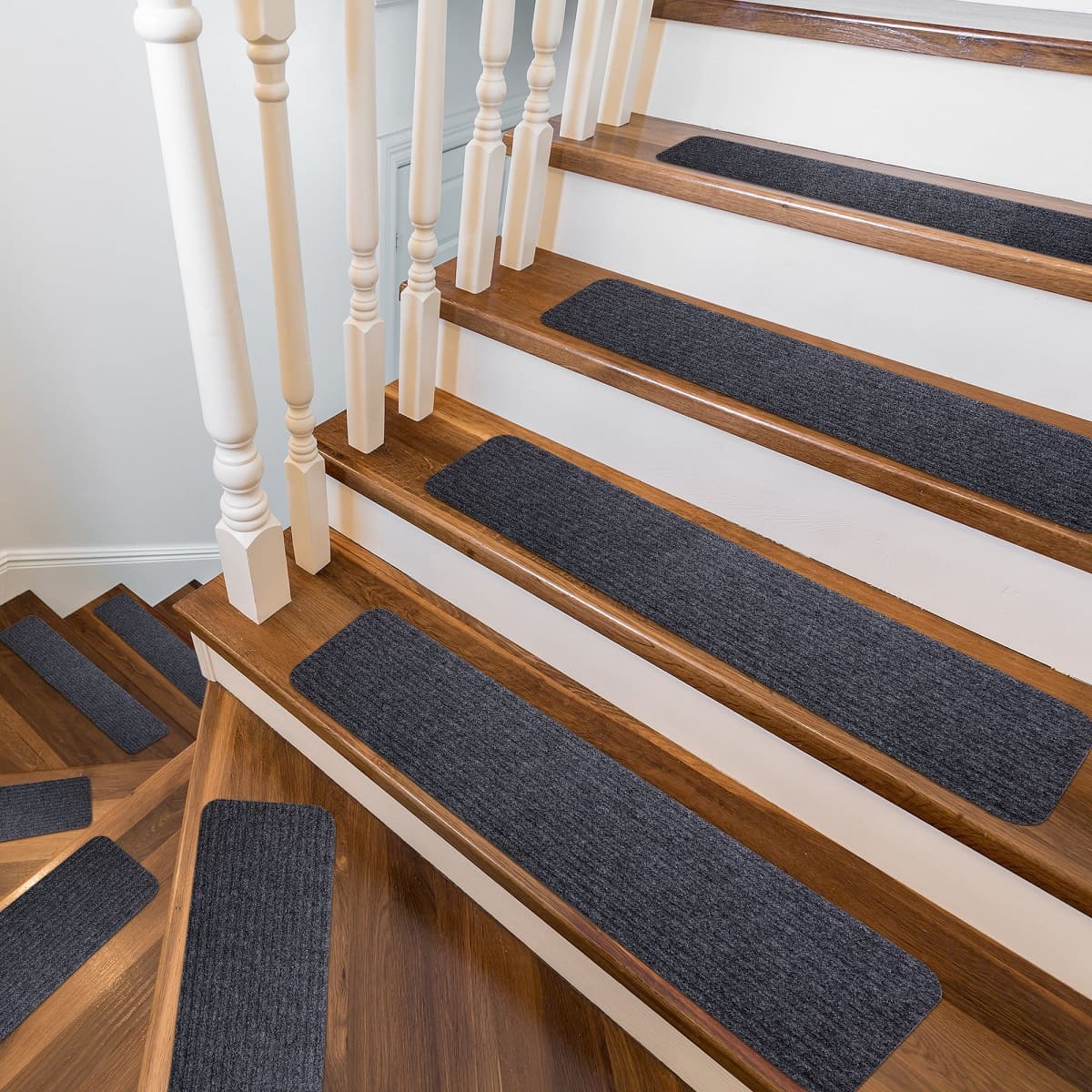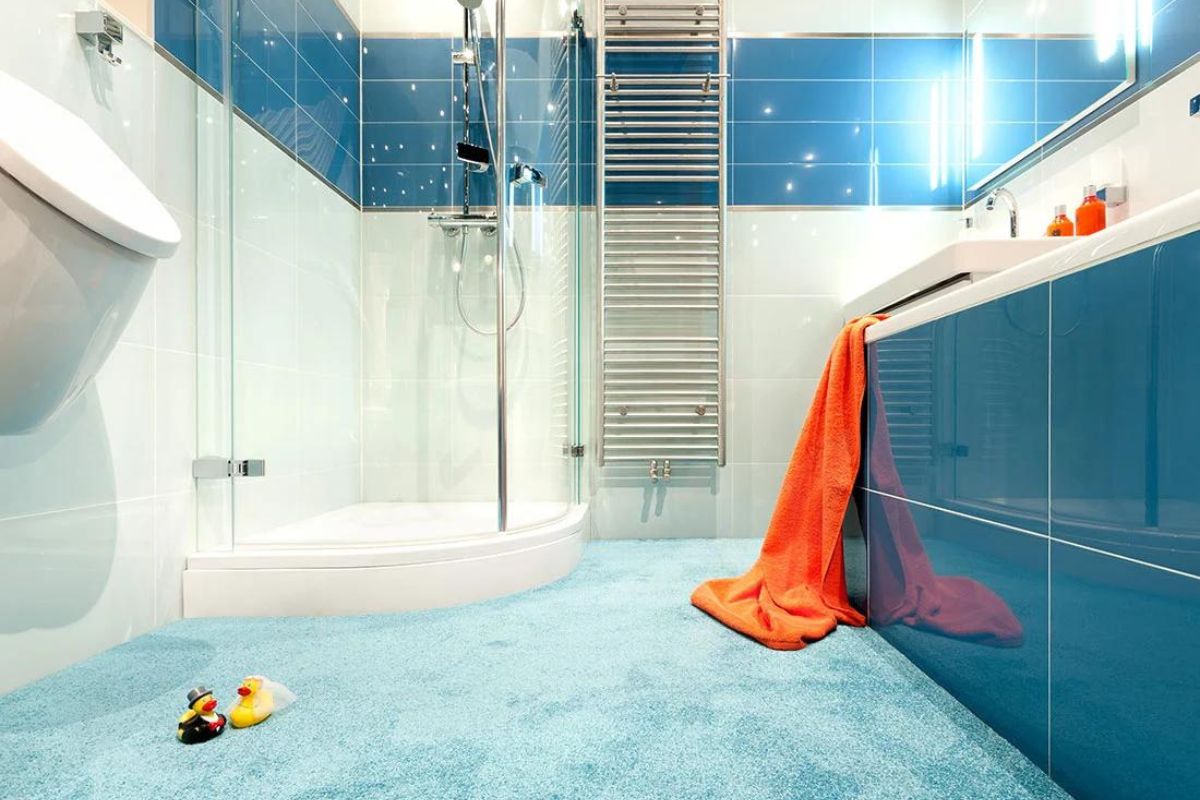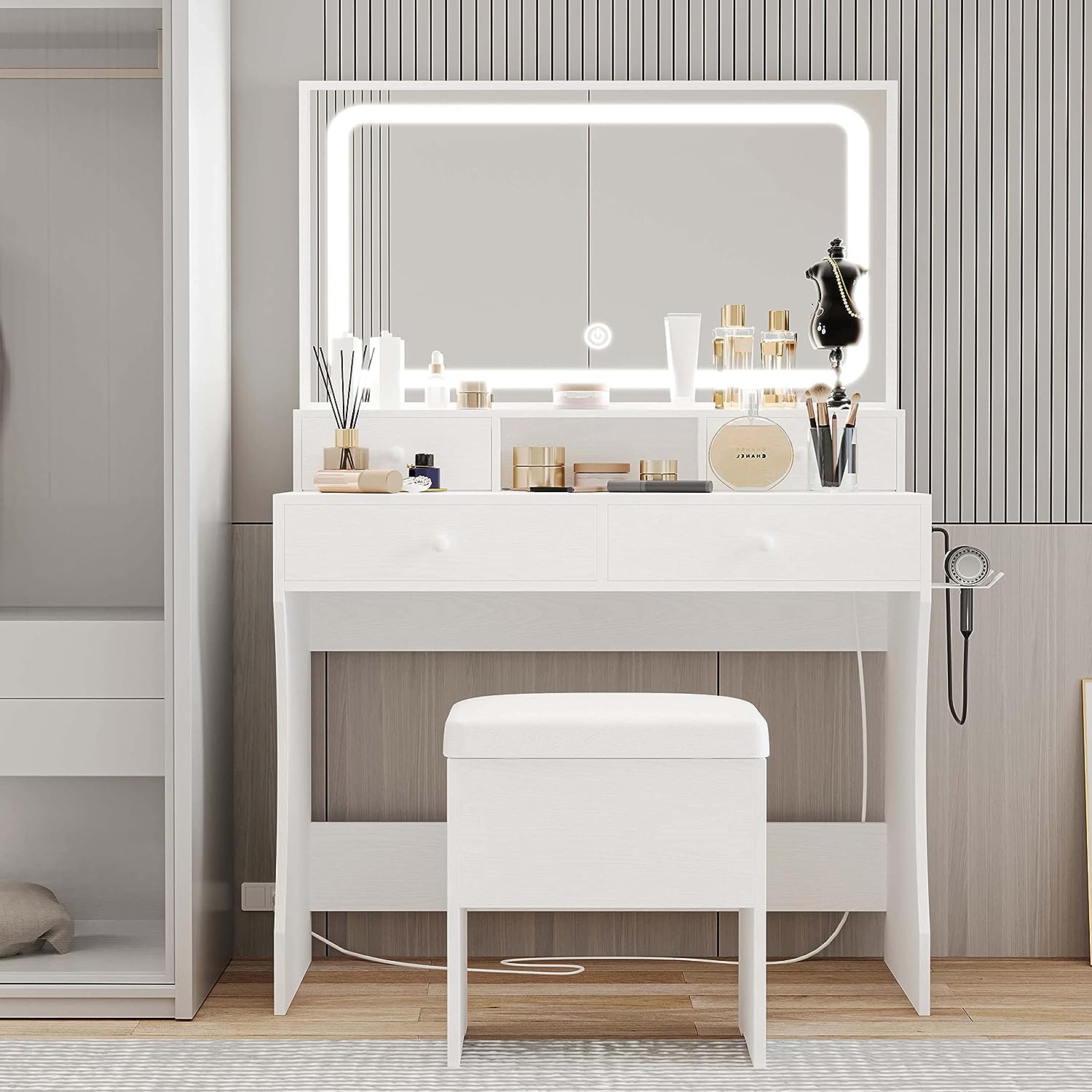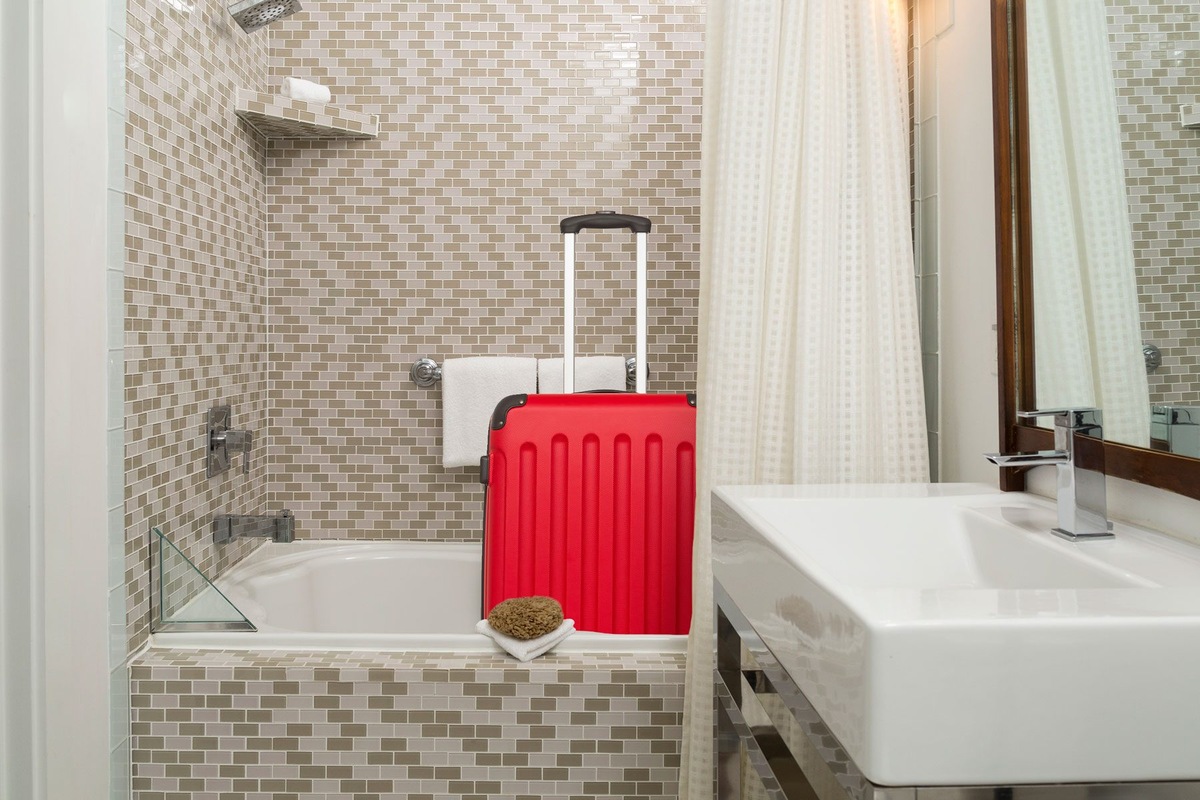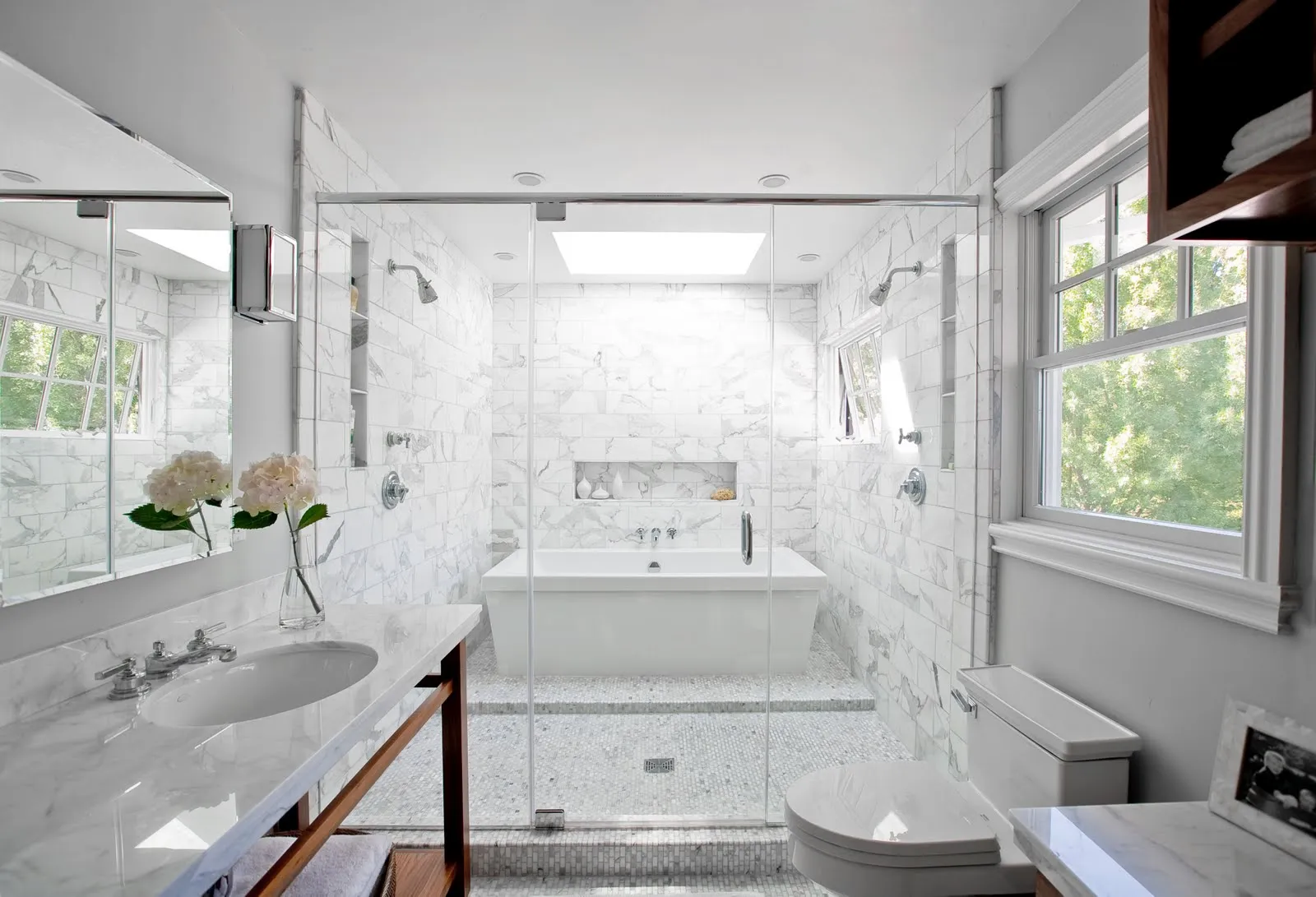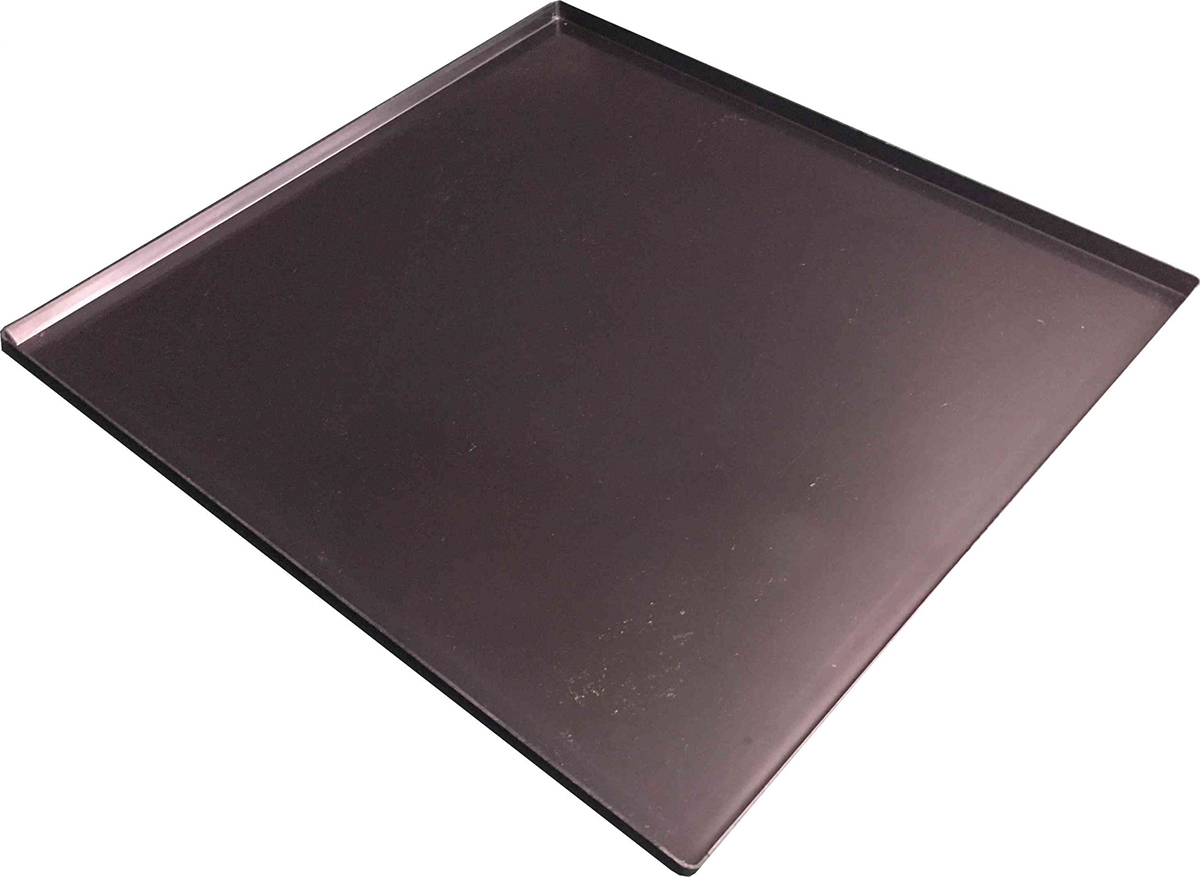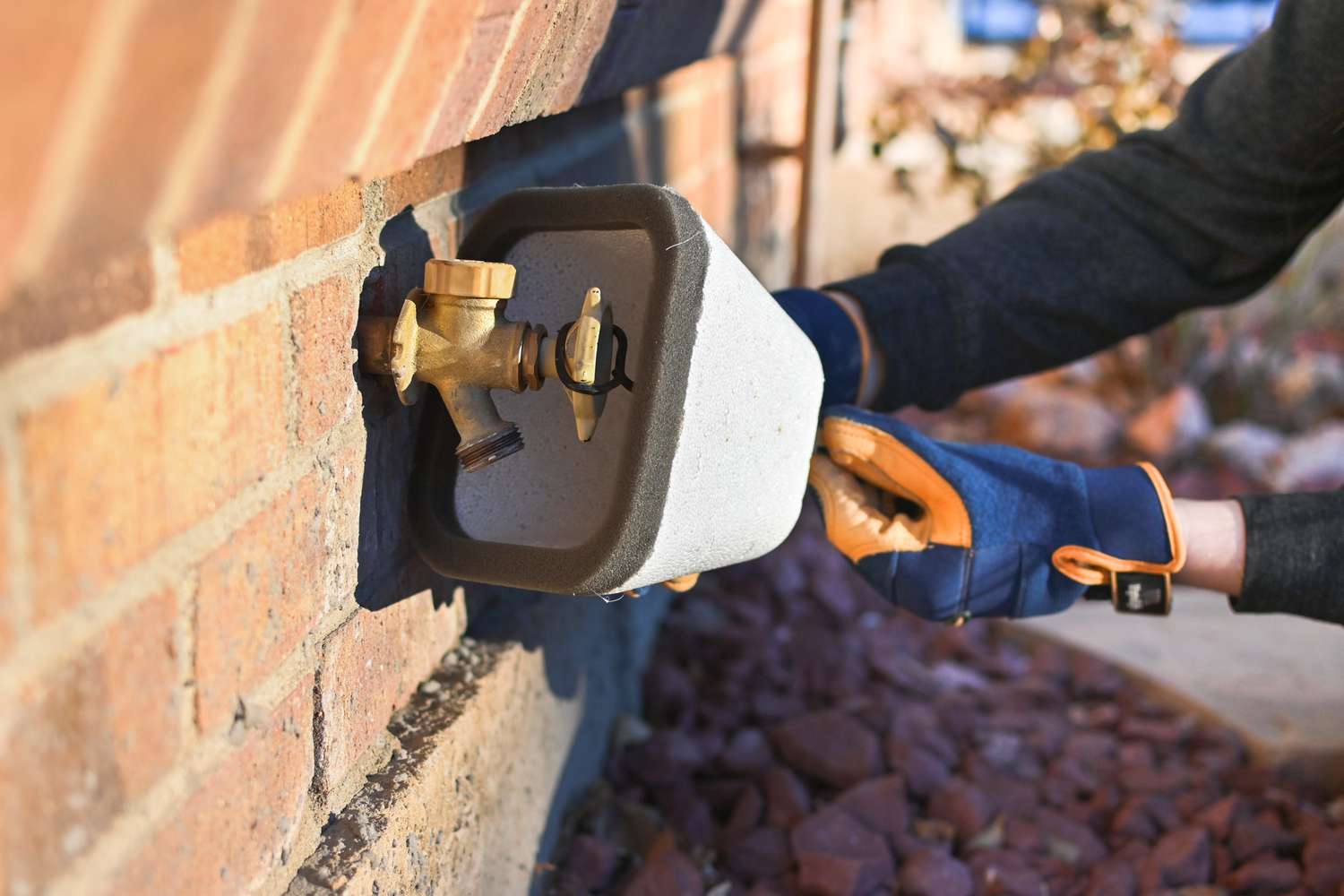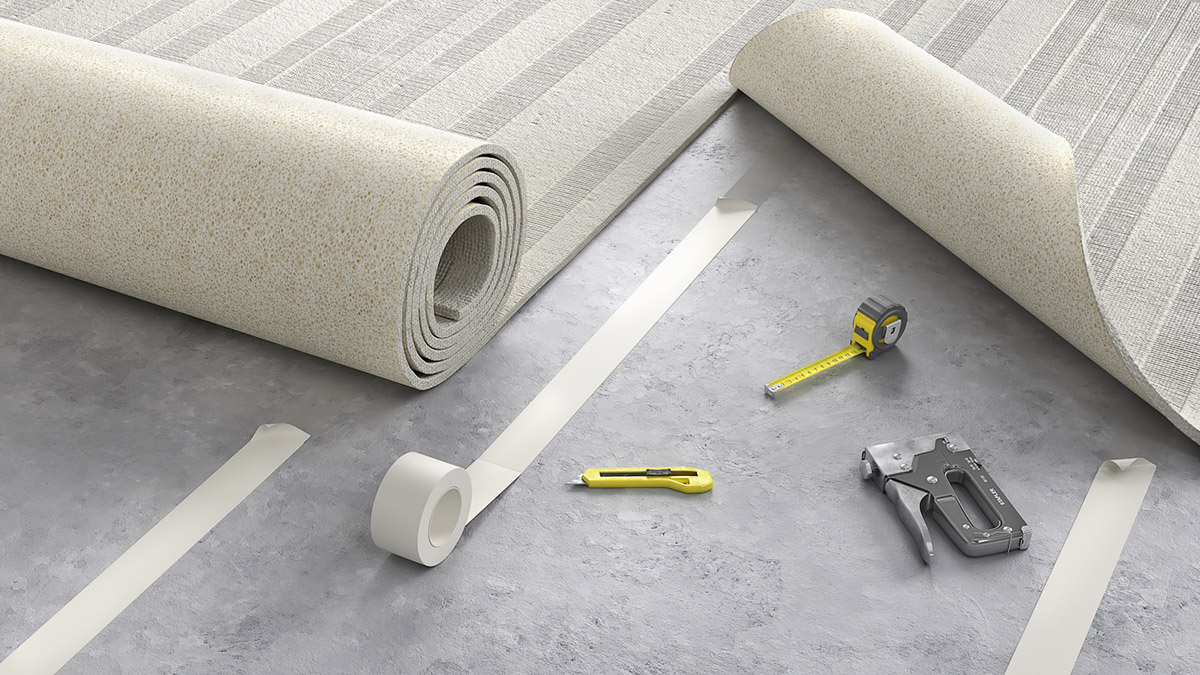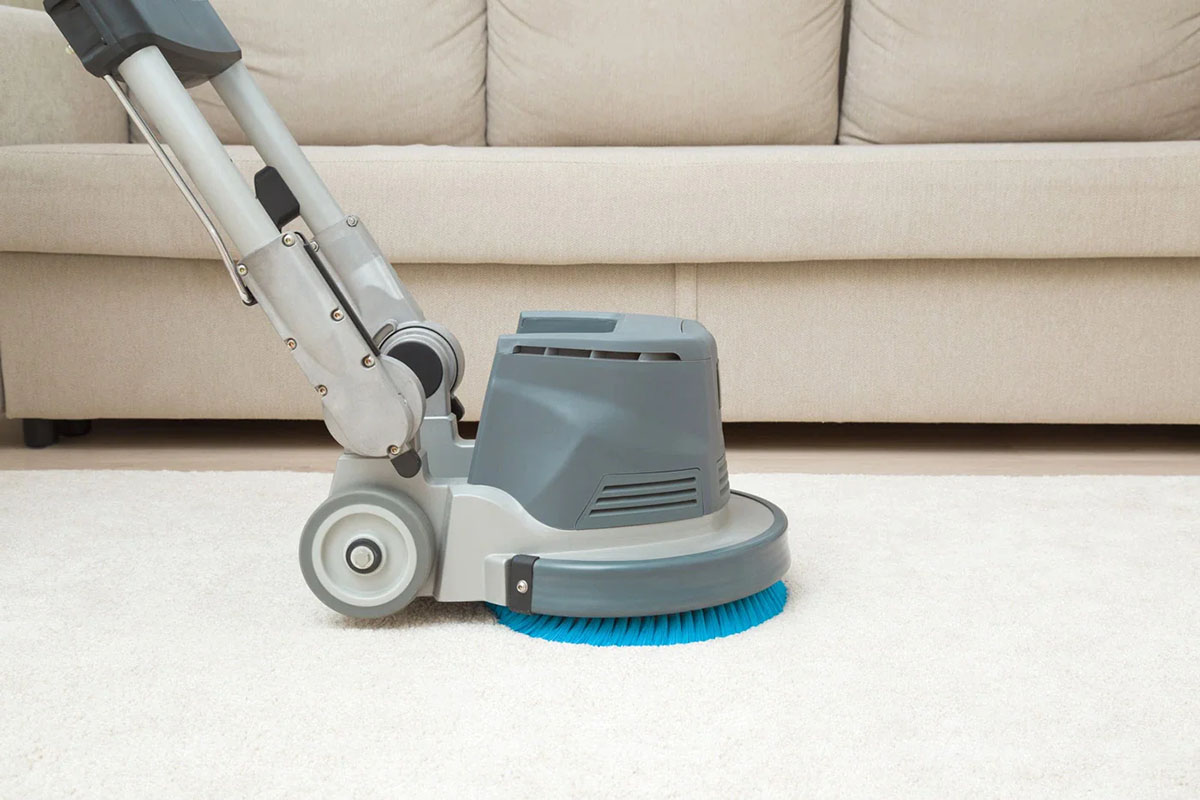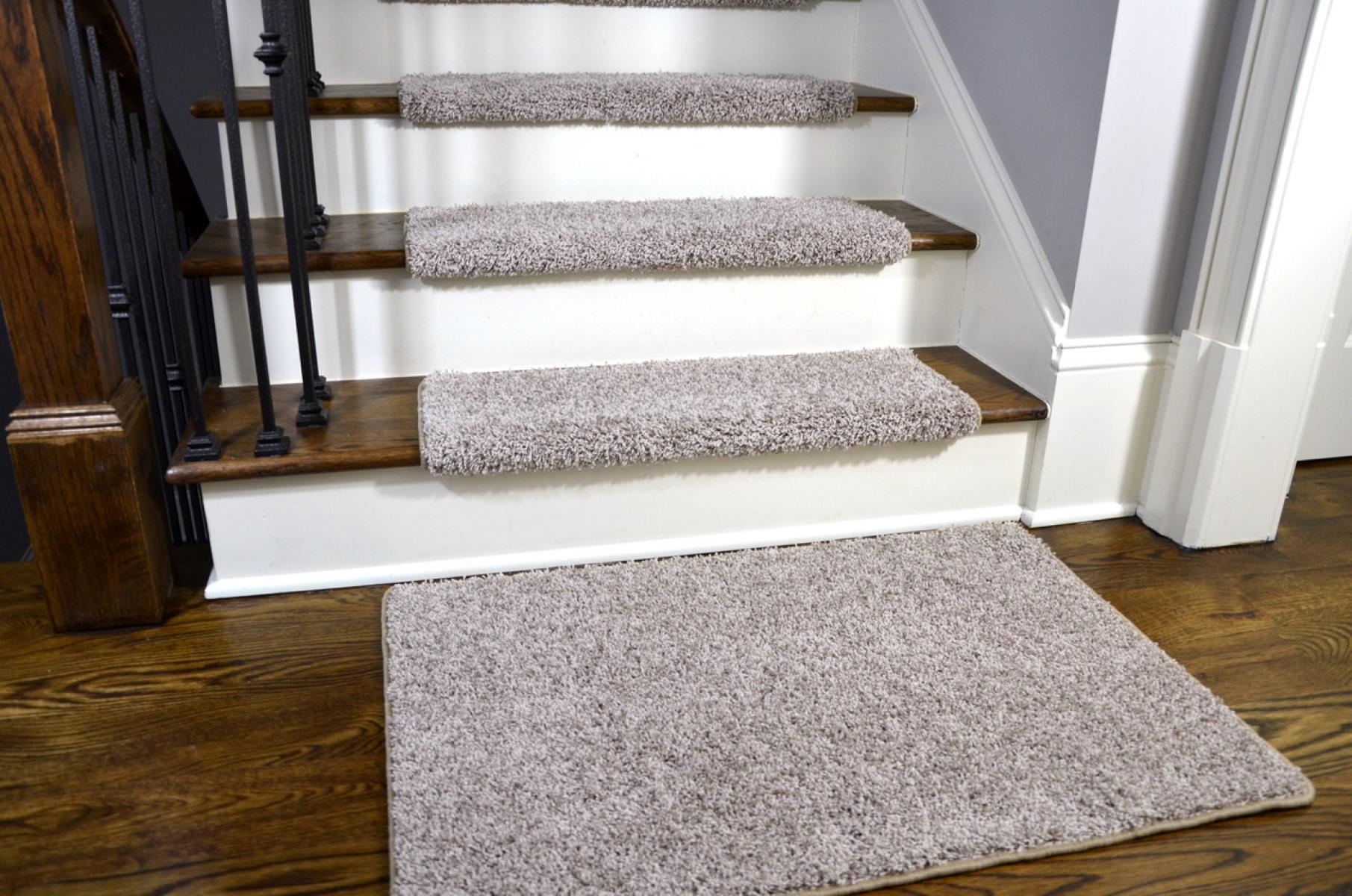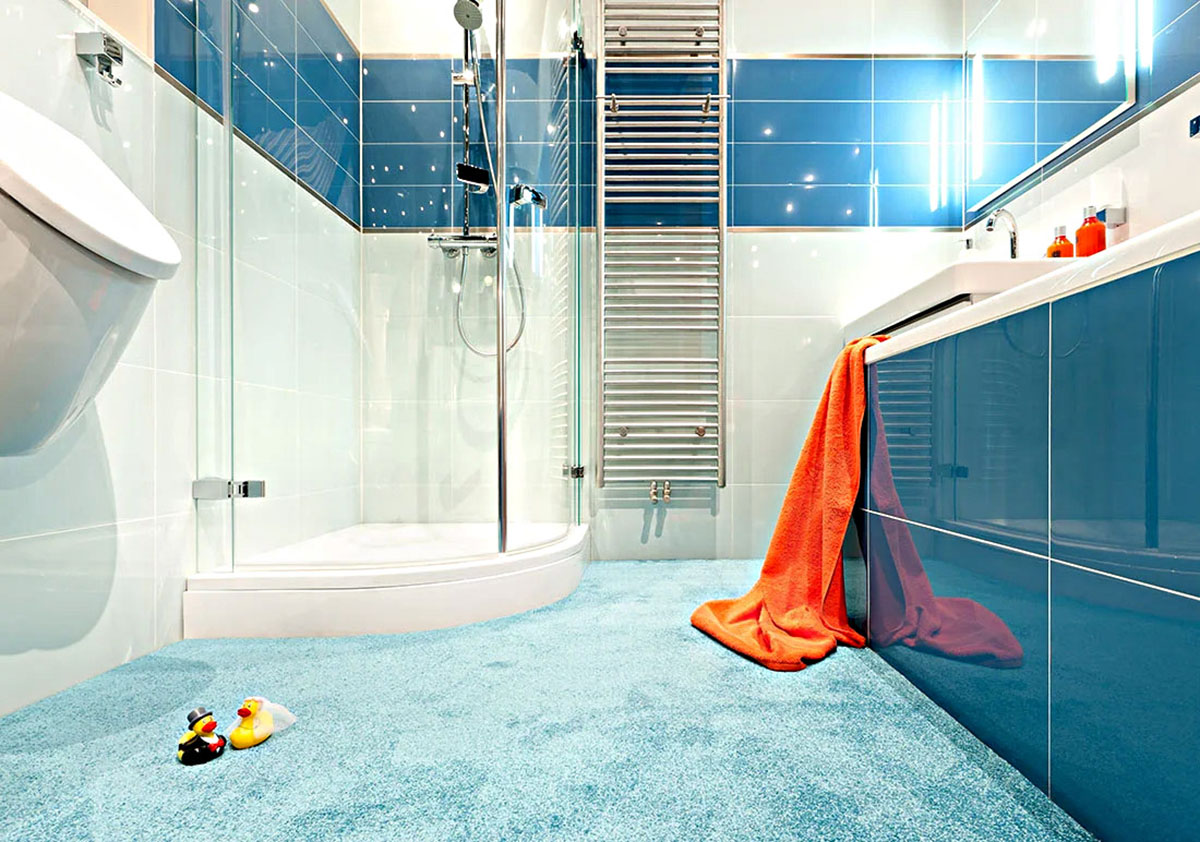

Articles
Why Put Carpet In The Bathroom
Modified: March 6, 2024
Discover the benefits and considerations of using carpets in your bathroom. Read our informative articles on how to choose the right carpet for your bathroom and maintain its cleanliness.
(Many of the links in this article redirect to a specific reviewed product. Your purchase of these products through affiliate links helps to generate commission for Storables.com, at no extra cost. Learn more)
Introduction
When it comes to bathroom flooring options, most people immediately think of tiles or vinyl. However, have you ever considered putting carpet in the bathroom? While it may seem unconventional, there are actually several reasons why installing carpet in the bathroom can be a great choice. In this article, we will explore the pros and cons of having carpet in the bathroom and help you decide if it’s the right option for your home.
Traditionally, carpet has been associated with living areas and bedrooms, but with advancements in materials and manufacturing techniques, it’s now more practical to have carpet in moisture-prone areas like bathrooms. With its soft texture and added warmth, carpet can provide a cozy and comfortable feel to your bathroom space. Additionally, carpet offers unique design possibilities, making it an interesting and stylish choice for those looking to add a touch of luxury to their bathrooms.
Before you decide whether to install carpet in your bathroom, it’s important to understand the advantages and disadvantages it brings. In the next sections, we will discuss the pros and cons of having carpet in the bathroom, allowing you to make an informed decision that best suits your needs and preferences.
Key Takeaways:
- Carpet in the bathroom can provide warmth, safety, and a cozy atmosphere, but requires regular cleaning and maintenance to prevent mold and moisture issues.
- While carpet adds luxury and reduces noise, it may trap allergens and be harder to clean. Consider your priorities and bathroom environment before choosing carpet flooring.
Read more: How To Put Carpet In Basement
Pros of Installing Carpet in the Bathroom
While carpet may not be the first choice for bathroom flooring, there are actually several benefits to consider. Here are some of the advantages of having carpet in the bathroom:
- Enhanced Warmth and Comfort: One of the biggest advantages of having carpet in the bathroom is the added warmth and comfort it provides. Stepping onto a soft, plush carpet can be a cozy and comforting experience, especially during colder months. Carpet can help to insulate the floor, making it feel warmer underfoot and creating a more comfortable environment in the bathroom.
- Improved Safety and Reduced Slipperiness: Bathrooms can often be slippery, especially when wet. Carpet adds an extra layer of traction, making it safer to walk on compared to hard flooring surfaces, such as tiles. The texture of the carpet helps to minimize the risk of slipping and can provide a more secure footing, reducing the likelihood of accidents or falls, particularly for young children or elderly individuals.
- Noise Reduction: Another advantage of carpet in the bathroom is its excellent noise-reducing properties. Hard surfaces like tiles tend to amplify sounds, leading to echo and noise reverberation. With carpet, noise is absorbed, resulting in a quieter environment. This is particularly beneficial for bathrooms located near bedrooms or shared living spaces, as it helps to minimize disturbance and create a more peaceful atmosphere.
- Aesthetic Appeal and Design Options: Carpet in the bathroom can add a touch of luxury and elegance to the space. With a wide range of colors, patterns, and textures available, you can choose a carpet that complements your bathroom decor and personal style. A well-chosen carpet can enhance the overall aesthetics of the bathroom, making it feel more inviting and visually appealing.
- Additional Insulation and Energy Efficiency: Carpets act as an additional layer of insulation, helping to retain heat in the bathroom. This can contribute to improved energy efficiency, as the carpet retains warmth, reducing the need for excessive heating. By minimizing heat loss through the floor, you can potentially save on energy bills during colder months.
Considering these benefits, it’s clear that carpet in the bathroom can bring comfort, safety, aesthetics, and energy efficiency to your space. However, before making a final decision, it’s important to also consider the potential drawbacks of installing carpet in the bathroom, which we will explore in the next section.
Enhanced Warmth and Comfort
One of the primary advantages of installing carpet in the bathroom is the enhanced warmth and comfort it provides. The soft and plush texture of carpeting creates a cozy and inviting atmosphere that can make your bathroom feel more comfortable and welcoming.
Stepping onto a cold tile floor can be quite an unpleasant experience, especially during the colder months. However, with carpeting, you won’t have to worry about chilly feet when you enter your bathroom in the morning. The carpet acts as an insulator, preventing the cold from transferring directly to your feet. This added layer of warmth can make your bathroom experience much more enjoyable, particularly during the colder seasons.
Carpeting also provides a cushioned and comfortable surface to walk on. Unlike hard flooring materials like tiles or vinyl, carpets are soft and forgiving, offering a gentle resistance underfoot. This can be especially beneficial for those with foot or joint pain, as the carpet’s cushioning effect can help alleviate some discomfort.
Moreover, the warmth and comfort of carpeting in the bathroom can be particularly appealing for young children or elderly individuals. Bathrooms can be a challenging space to navigate safely, especially with wet floors. The added cushioning of carpeting helps to minimize the risk of injury in case of accidental slips or falls, providing a softer landing surface compared to hard flooring materials.
In addition to the physical warmth and comfort, carpeting can also create a visual and tactile sense of coziness. The texture and appearance of a well-chosen carpet can contribute to a relaxed and inviting atmosphere, helping you unwind and indulge in self-care rituals in your bathroom.
Overall, the enhanced warmth and comfort provided by carpeting in the bathroom can greatly improve your everyday experience. It creates a cozy and inviting space that makes it more enjoyable to start your day or relax in the evening. So, if you prioritize comfort and a pleasant underfoot feel, installing carpet in your bathroom might be the perfect choice for you.
Improved Safety and Reduced Slipperiness
One of the important advantages of installing carpet in the bathroom is the improved safety it offers by reducing slipperiness. Bathrooms are notorious for being slippery, especially when they get wet. With hard flooring surfaces like tiles or vinyl, the risk of slipping and falling increases. However, carpet provides an extra layer of traction, making it a safer option for bathroom flooring.
The texture of carpeting creates friction that helps to reduce the likelihood of slipping. This is particularly beneficial for households with children or elderly individuals, who may have a higher risk of accidental falls. For young children who are still learning to walk, carpeting can provide a more secure footing, giving parents peace of mind.
Carpeting in the bathroom helps to absorb and contain water, preventing it from spreading across the floor. This reduces the chances of accidentally stepping on a wet and slippery surface. The fibers of the carpet act as a barrier, soaking up moisture and minimizing the risk of slips and falls.
Moreover, the cushioning effect of carpeting can also offer additional protection in case of a fall. The softness of the carpet provides a comfortable landing surface, reducing the impact on the body and potentially minimizing the severity of injuries.
Another safety aspect to consider is the noise reduction provided by carpeting. Hard surfaces like tiles tend to amplify sounds, resulting in echoes and reverberations. This can lead to a higher risk of accidents, as it becomes challenging to hear any potential hazards or warnings. Carpeting absorbs sounds, making the bathroom a quieter space and allowing you to be more aware of your surroundings.
It’s important to note that while carpeting can enhance safety in the bathroom, it’s crucial to choose carpets specifically designed for moist environments. Look for materials that are water-resistant, mold-resistant, and easy to clean. Additionally, ensure proper ventilation in the bathroom to minimize moisture buildup and prevent the growth of mold or mildew.
By installing carpet in your bathroom, you can significantly improve safety by reducing slipperiness and creating a more secure environment. The added traction and cushioning provided by carpeting can give you peace of mind, knowing that you and your loved ones are less likely to experience accidents or injuries.
Noise Reduction
When it comes to bathroom design, noise reduction may not be the first thing that comes to mind. However, installing carpet in the bathroom can actually help to reduce noise levels, creating a more peaceful and tranquil space.
Hard surfaces like tiles or vinyl tend to reflect and amplify sound, resulting in echoes and reverberations. This can make the bathroom a noisy and disruptive environment, especially in homes with multiple occupants or open-concept living spaces. Bathroom activities such as running water, flushing toilets, or using hairdryers can become much louder when there are no sound-absorbing materials.
By adding carpet to your bathroom, you introduce a noise-reducing element that absorbs and dampens sound. The fibers of the carpet act as a barrier, preventing sound waves from bouncing off hard surfaces and creating echoes. This results in a quieter and more acoustically pleasant environment.
The noise reduction properties of carpeting in the bathroom can be particularly beneficial for those with bedrooms or shared living areas adjacent to the bathroom. It helps to minimize disturbance and creates a more peaceful atmosphere, allowing you to relax and unwind without being constantly reminded of bathroom activities.
Furthermore, carpeting can also reduce the transmission of sound between floors. If you have a multi-story home and the bathroom is located on an upper level, carpeting can help to absorb footstep sounds and reduce the transfer of noise to lower levels. This can be especially advantageous during nighttime or early morning routines, when you want to minimize disturbance to others who may be sleeping or working in adjacent areas.
It’s important to note that the noise reduction benefits of carpeting can vary based on the type and thickness of the carpet, as well as the underlying padding. When choosing carpeting for your bathroom, consider opting for a higher density or thicker pile carpet to maximize sound absorption. Additionally, selecting carpets with noise-reducing underlays or padding can further enhance the noise reduction capabilities.
In summary, installing carpet in the bathroom can significantly reduce noise levels, creating a quieter and more peaceful space. It minimizes echoes, absorbs sound waves, and contributes to a more enjoyable bathroom experience. Whether you want to enjoy a relaxing bath or minimize disruption to others, carpeting can be a valuable addition to your bathroom design.
Read more: How To Put Carpet On Stairs
Aesthetic Appeal and Design Options
When it comes to bathroom design, aesthetics play a significant role in creating a visually appealing and cohesive space. Carpeting can add a unique touch of elegance and luxury to your bathroom, making it both visually appealing and comfortable.
With a wide range of colors, patterns, and textures available, carpeting offers endless design options for your bathroom. Whether you prefer a neutral and understated look or a bold and vibrant statement, there is a carpet to suit your style and complement your existing decor.
Carpeting can act as a focal point in your bathroom, drawing attention and adding visual interest. You can choose a carpet with intricate patterns or designs that add depth and dimension to the space. Alternatively, a solid-colored carpet can create a sleek and modern look, allowing other elements of the bathroom to shine.
Moreover, carpet brings a sense of warmth and softness to the room that other hard flooring materials cannot provide. It can soften the overall look and feel of the bathroom, creating a more inviting and cozy ambiance. This can be particularly beneficial if you’re striving to achieve a spa-like atmosphere or a comfortable retreat within your home.
In addition to the aesthetic appeal of carpeting, it can also contribute to the overall design cohesion of your home. If you have carpeting in other areas of your house, extending it to the bathroom can create a harmonious flow and a sense of continuity. This can make your home feel more cohesive and connected, enhancing the overall design aesthetic.
It’s important to consider your specific bathroom requirements and decor style when selecting carpeting. Opt for materials that are specifically designed for moisture-prone areas and are easy to clean. Stain-resistant and water-resistant carpets are ideal choices for bathrooms, ensuring durability and longevity while maintaining their aesthetic appeal.
Overall, the aesthetic appeal and design options provided by carpeting in the bathroom can transform the space into a visually stunning and comfortable retreat. Whether you prefer a classic, timeless look or a contemporary and bold statement, carpeting offers versatility and endless possibilities to match your personal style and create a harmonious bathroom design.
Consider using carpet in the bathroom for added warmth and comfort, as well as to reduce slipping on hard, wet surfaces. Just be sure to choose a moisture-resistant option and clean it regularly to prevent mold and mildew.
Additional Insulation and Energy Efficiency
Installing carpet in the bathroom not only enhances the visual appeal and comfort but also provides additional insulation and contributes to energy efficiency in your home. This can have a positive impact on both your comfort and your wallet.
One of the key benefits of carpeting is its ability to act as an extra layer of insulation. Carpet fibers trap air, creating a thermal barrier between the floor and the rest of the room. This helps to prevent cold drafts from entering the bathroom and can make the space feel warmer and more comfortable.
By reducing heat loss through the floor, carpeting contributes to energy efficiency in your home. This means that less heat is required to maintain a comfortable temperature in the bathroom, potentially saving you money on heating costs. Additionally, the insulation provided by carpeting can reduce the need to rely heavily on heating appliances, leading to reduced energy consumption and a smaller carbon footprint.
Carpeting also helps to retain heat generated by heating systems, such as underfloor heating or radiators. Instead of the heat dissipating through the floor, the carpet acts as a barrier, preventing it from escaping. This allows the heat to stay within the bathroom space for a longer period, ensuring sustained warmth and comfort.
Moreover, the insulation properties of carpeting can also minimize sound transmission between floors. This can be particularly advantageous if your bathroom is located on an upper level and you want to reduce noise disturbance to the lower levels of your home.
When selecting carpeting for the bathroom, opt for materials that have good insulation properties. Look for carpets with higher pile density, as these tend to provide better insulation. Additionally, consider using a quality underlay or padding beneath the carpet to further enhance insulation and energy efficiency.
It’s important to note that proper ventilation is essential when using carpet in the bathroom to prevent moisture buildup. Ensure that your bathroom has adequate ventilation measures in place, such as extractor fans or windows, to maintain a healthy and moisture-free environment.
By investing in carpeting for your bathroom, you can enjoy the benefits of additional insulation and improved energy efficiency. Not only will you create a cozier and more comfortable space, but you may also see a reduction in your energy bills and contribute to a greener and more sustainable home.
Cons of Installing Carpet in the Bathroom
While there are several advantages to installing carpet in the bathroom, it’s important to consider the potential drawbacks as well. Here are some of the cons to keep in mind:
- Increased Moisture Absorption and Potential Mold Growth: Bathrooms are naturally humid and prone to moisture buildup. Carpets, being absorbent in nature, can trap moisture and take longer to dry compared to hard flooring materials. This can create an environment conducive to mold and mildew growth, potentially leading to unpleasant odors and health concerns if not properly maintained and cleaned.
- Difficulty in Cleaning and Maintenance: Cleaning and maintaining a carpeted bathroom can be more challenging compared to hard flooring options. Spills and stains are more likely to occur in a bathroom environment, and it can be harder to completely remove them from carpet fibers. Regular vacuuming is necessary to prevent the buildup of dirt, debris, and allergens in the carpet. Special care and cleaning methods may be required to address any mold or mildew growth as well.
- Allergies and Hygiene Concerns: Carpeting in the bathroom can potentially harbor allergens such as dust mites, pet dander, and pollen. This can be a concern for individuals with allergies or respiratory sensitivities. Additionally, the bathroom is a space where hygiene is particularly important, and carpeting may not be as hygienic as hard flooring surfaces, which can be easily wiped or mopped clean.
Given these considerations, it’s essential to weigh the pros and cons and evaluate your specific needs and preferences before deciding whether to install carpet in your bathroom. If you decide to proceed, consider using moisture-resistant and mold-resistant carpet materials specifically designed for use in bathrooms. Proper ventilation and regular cleaning and maintenance are also key to minimizing any potential issues associated with carpeting in the bathroom.
Ultimately, your decision should be based on your lifestyle, desired aesthetics, and willingness to commit to the required upkeep. By carefully considering both the advantages and disadvantages, you can make an informed choice that aligns with your priorities and enhances the functionality and appeal of your bathroom space.
Increased Moisture Absorption and Potential Mold Growth
One of the main concerns when it comes to installing carpet in the bathroom is the increased moisture absorption and potential for mold growth. Bathrooms are naturally humid spaces, prone to moisture buildup from activities such as bathing, showering, and handwashing. While carpets can add warmth and comfort to the bathroom, their absorbent nature can become a disadvantage in this moisture-rich environment.
Unlike hard flooring materials, such as tiles or vinyl, carpets have fibers that can absorb and hold onto moisture for longer periods of time. This can create an ideal breeding ground for mold and mildew, which thrive in damp and dark conditions. Mold growth not only leads to unpleasant odors but can also pose health risks, especially for individuals with respiratory issues or allergies.
To prevent moisture-related issues in a carpeted bathroom, it is crucial to take special care and maintenance measures. Regular and thorough drying of the carpet after each use is necessary to minimize moisture retention. Proper ventilation, such as using extractor fans or opening windows, can help to reduce humidity levels and aid in drying the carpet more efficiently.
In addition to general drying, it is important to address any spills or leaks promptly. Wipe up any water or liquid spills immediately to avoid seepage into the carpet fibers. It is also recommended to use bath mats or rugs in areas that are most prone to water splashes, such as near the shower or bathtub, to protect the carpet and prevent excess moisture absorption.
Regular cleaning is essential to prevent mold growth and maintain the overall hygiene of a carpeted bathroom. Vacuuming on a regular basis helps to remove dust, allergens, and any loose particles from the carpet fibers. Deep cleaning or steam cleaning the carpet periodically can also help to eliminate built-up dirt and bacteria.
Choosing the right type of carpet for a bathroom is another factor to consider in minimizing moisture absorption and mold growth. Look for carpets that are specifically designed for wet areas, such as those labeled as moisture-resistant or mold-resistant. These carpets are often made from synthetic materials or have treatments that offer increased protection against moisture damage and microbial growth.
Ultimately, it’s important to be proactive in preventing excessive moisture in a carpeted bathroom and to establish and maintain a regular cleaning and maintenance routine. By addressing these potential issues, you can enjoy the comfort and aesthetic appeal of carpeting while mitigating the risks associated with moisture absorption and mold growth.
Read more: How To Put Fridge On Carpet
Difficulty in Cleaning and Maintenance
Another downside of installing carpet in the bathroom is the increased difficulty in cleaning and maintenance compared to hard flooring options. Bathrooms are high-traffic areas with frequent exposure to water, spills, and stains, making carpeted surfaces more susceptible to dirt and grime buildup.
Unlike hard flooring materials, which can be easily wiped or mopped clean, carpets require more extensive cleaning methods to remove stains and keep them looking fresh. Spills and stains on carpet fibers can penetrate deep into the material, making it challenging to completely remove them. Common bathroom stains, such as those from cosmetics, hair products, or even accidental urine splatters, can be particularly stubborn to clean from carpets.
In addition to regular vacuuming, deep cleaning of the carpet may be necessary to remove embedded dirt and stains. This can involve using carpet cleaning machines or hiring professional carpet cleaners. It is essential to follow the manufacturer’s recommendations for cleaning products and methods to avoid damaging or discoloring the carpet fibers.
Furthermore, moisture from bathroom activities can lead to musty odors and bacterial growth in the carpet if not properly cleaned and dried. Regular and thorough drying of the carpet after each use is important to prevent the buildup of moisture and to inhibit the growth of odor-causing bacteria.
To maintain the cleanliness and longevity of a carpeted bathroom, it is recommended to implement a regular cleaning routine. This includes promptly cleaning up any spills or accidents, vacuuming the carpet at least once a week, and scheduling deep cleanings as needed. Additionally, ensuring proper ventilation in the bathroom can help in expelling excess moisture and expediting the drying process.
It’s important to note that the difficulty in cleaning and maintaining a carpeted bathroom can be mitigated with proper preventive measures. Placing absorbent mats or rugs in high-moisture areas, such as near the shower or bath, can help protect the carpet from direct exposure to water and stains. Regularly shampooing or steam cleaning the carpet can also help rejuvenate its appearance and remove deep-seated dirt.
Before installing carpet in the bathroom, carefully consider your willingness and ability to commit to the required cleaning and maintenance. It’s crucial to be diligent in keeping the carpet clean and dry to preserve its appearance, prevent odors, and avoid potential health issues associated with a poorly maintained carpet in a moisture-prone environment.
Allergies and Hygiene Concerns
One of the concerns when it comes to installing carpet in the bathroom is the potential for allergies and hygiene issues. Bathrooms are spaces where cleanliness and hygiene are of utmost importance, and carpets may not be the most hygienic choice compared to hard flooring options.
Carpet fibers can trap and hold onto allergens, such as dust mites, pet dander, pollen, and mold spores. In a bathroom environment, where moisture is present, these allergens can thrive and multiply, leading to potential health issues for individuals who are sensitive or allergic to them.
Hard flooring materials, on the other hand, can be easily wiped or mopped clean, removing allergens and promoting a healthier environment. With carpeted bathrooms, regular vacuuming is necessary to minimize the buildup of allergens, but it may not fully eliminate them, as allergens can become deeply embedded in the carpet fibers.
Another concern is the potential for bacteria growth in damp carpeted areas. Bathrooms, due to their moisture-rich environment, can be breeding grounds for bacteria. If not properly cleaned and dried, the moisture absorbed by the carpet can create an environment that facilitates bacterial growth, leading to unpleasant odors and potential health risks.
While regular cleaning and maintenance can help address hygiene concerns, it’s important to consider the extra effort required to keep a carpeted bathroom clean and allergen-free. In addition to regular vacuuming, deep cleaning of the carpet may be necessary to remove deep-seated dirt, allergens, and bacteria.
It’s also crucial to choose carpets that are specifically designed for use in bathrooms and are easy to clean. Look for carpets that have antimicrobial properties, are stain-resistant, and have good water and moisture resistance. These features can help minimize the risks of allergen buildup and bacterial growth in the carpet.
For individuals with allergies or respiratory sensitivities, it may be more suitable to opt for hard flooring materials that can be easily cleaned and do not trap allergens. However, if you still prefer the comfort and aesthetic appeal of carpet in your bathroom, diligent cleaning and maintenance practices, along with proper ventilation, can help mitigate potential allergy and hygiene concerns.
Ultimately, it’s important to weigh the potential allergies and hygiene concerns against the benefits and personal preferences when deciding whether to install carpet in the bathroom. Consider your specific needs, potential health risks, and willingness to invest in thorough cleaning and maintenance before making a decision.
Conclusion
After considering the pros and cons of installing carpet in the bathroom, it’s clear that this decision requires careful evaluation and consideration of your specific needs and preferences. While carpeting can offer advantages such as enhanced warmth and comfort, improved safety, noise reduction, aesthetic appeal, and additional insulation, there are also potential drawbacks, including increased moisture absorption, difficulty in cleaning and maintenance, and concerns regarding allergies and hygiene.
Before making a decision, it’s crucial to assess the specific requirements and characteristics of your bathroom. Factors to consider include the level of moisture present, the frequency of use, the potential for spills and stains, and your commitment to regular cleaning and maintenance. Additionally, selecting the right type of carpet designed for bathrooms, proper ventilation, and preventive measures such as using bath mats can help mitigate some of the potential issues associated with carpeting in the bathroom.
If you prioritize comfort, warmth, and a cozy atmosphere, and are willing to invest time and effort into maintenance, carpeting in the bathroom can be a viable option. It can provide a luxurious and inviting feel, reduce noise levels, and create a visually stunning space. Proper cleaning, drying, and regular maintenance are essential in order to minimize moisture-related problems and sustain the cleanliness and hygiene of the carpet.
On the other hand, if you have concerns about moisture retention, mold growth, allergies, or hygiene, or prefer a flooring option that is easier to clean and maintain, hard flooring materials like tiles or vinyl might be more suitable for your bathroom. These options offer greater durability, ease of cleaning, and resistance to moisture and stains, making them a practical choice for bathrooms that experience high levels of humidity and activity.
In the end, the decision to install carpet in the bathroom is a personal one that depends on a variety of factors and individual preferences. By carefully weighing the pros and cons, considering the specific characteristics of your bathroom, and understanding your own priorities, you can make an informed choice that creates a functional, comfortable, and visually appealing bathroom space that meets your needs and enhances your overall bathing experience.
Frequently Asked Questions about Why Put Carpet In The Bathroom
Was this page helpful?
At Storables.com, we guarantee accurate and reliable information. Our content, validated by Expert Board Contributors, is crafted following stringent Editorial Policies. We're committed to providing you with well-researched, expert-backed insights for all your informational needs.
